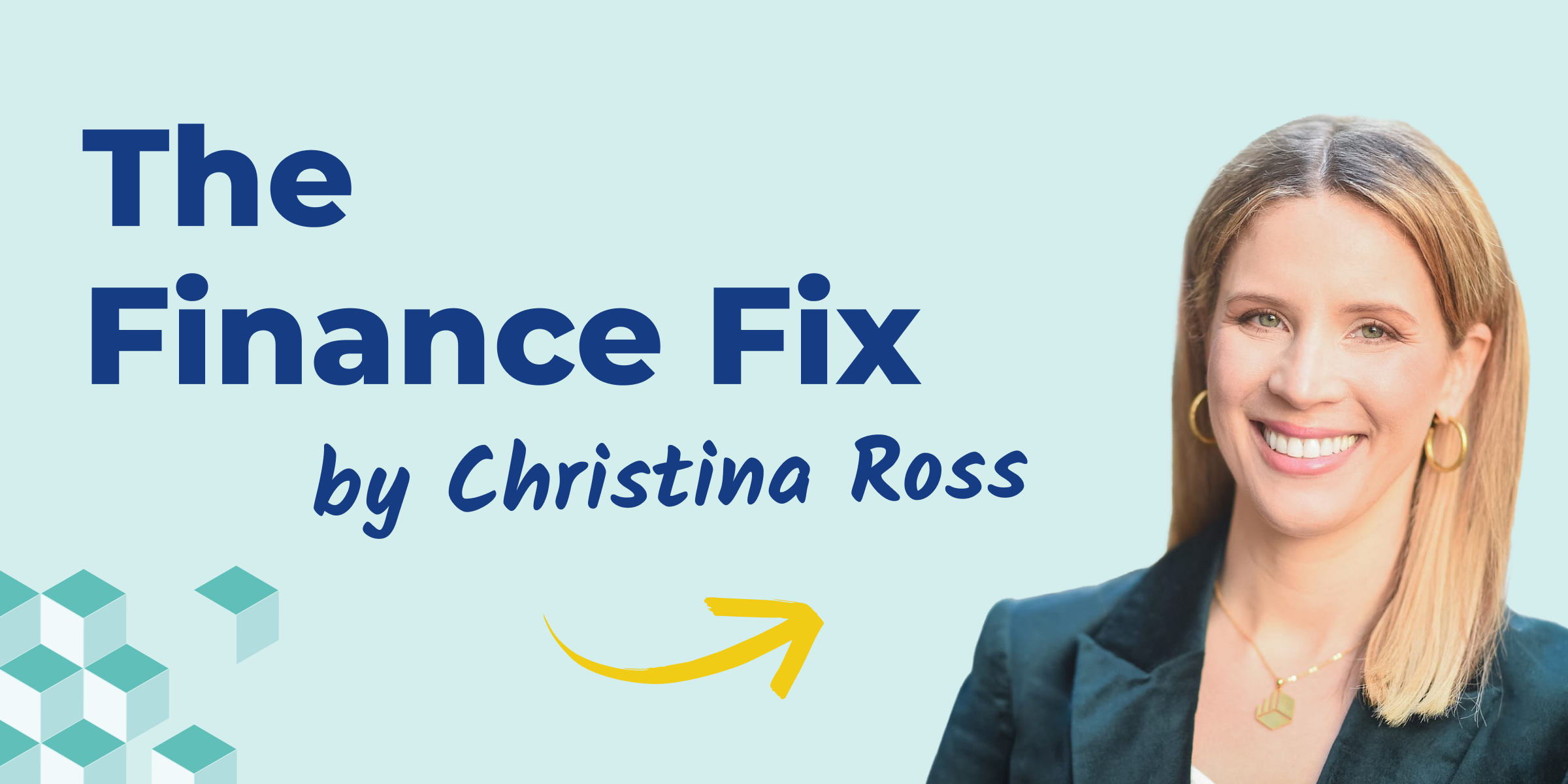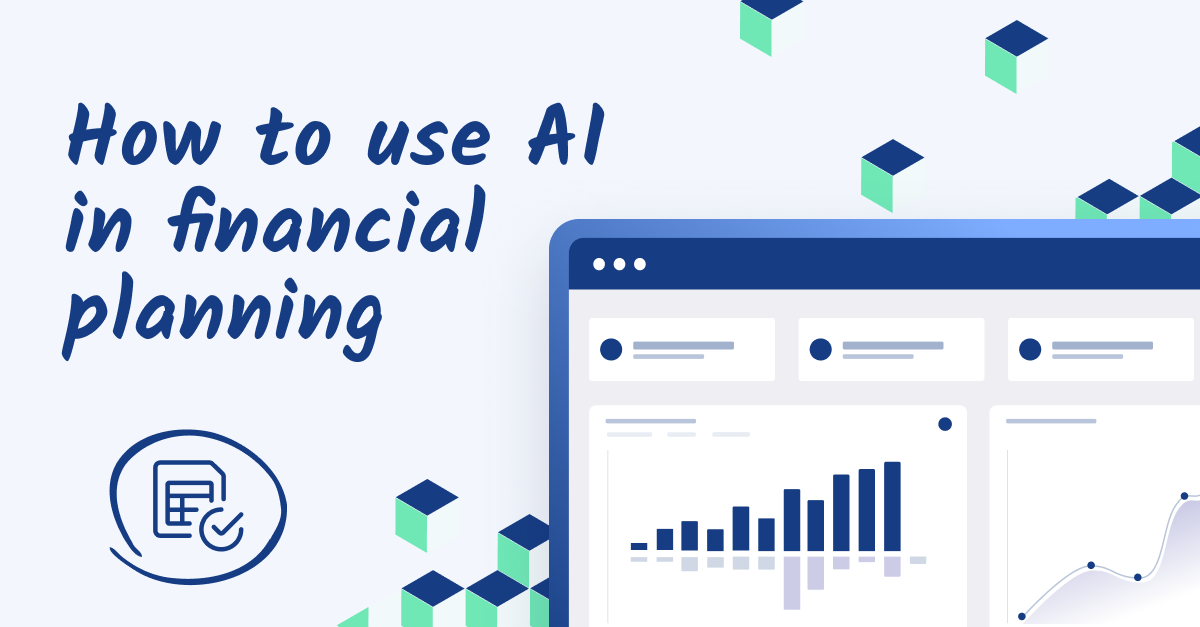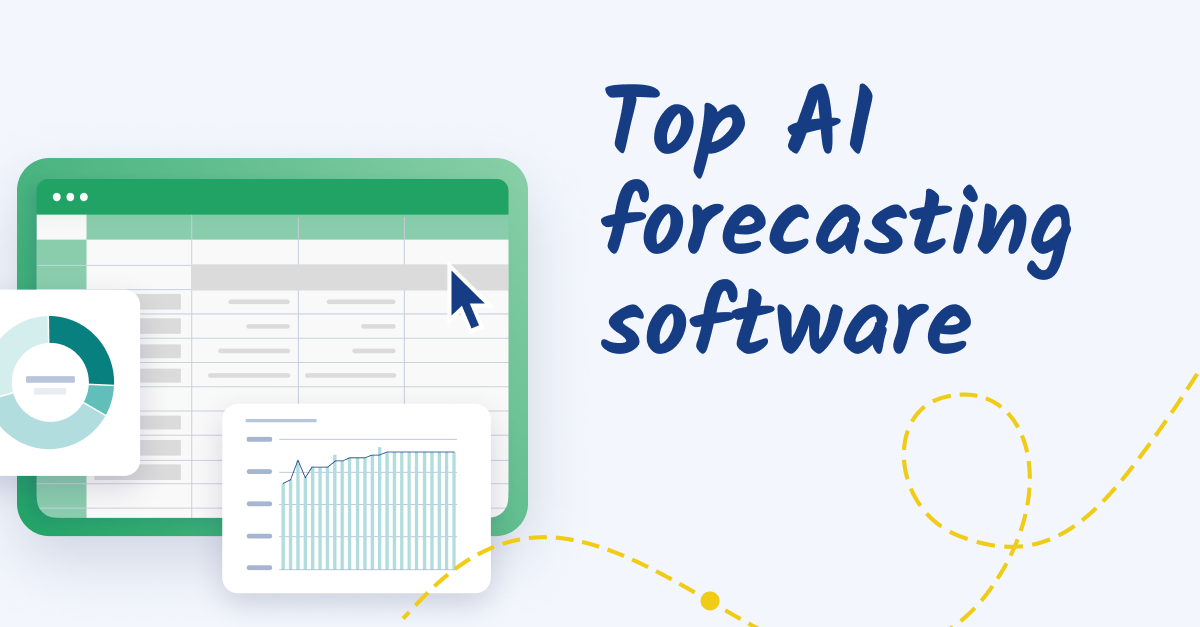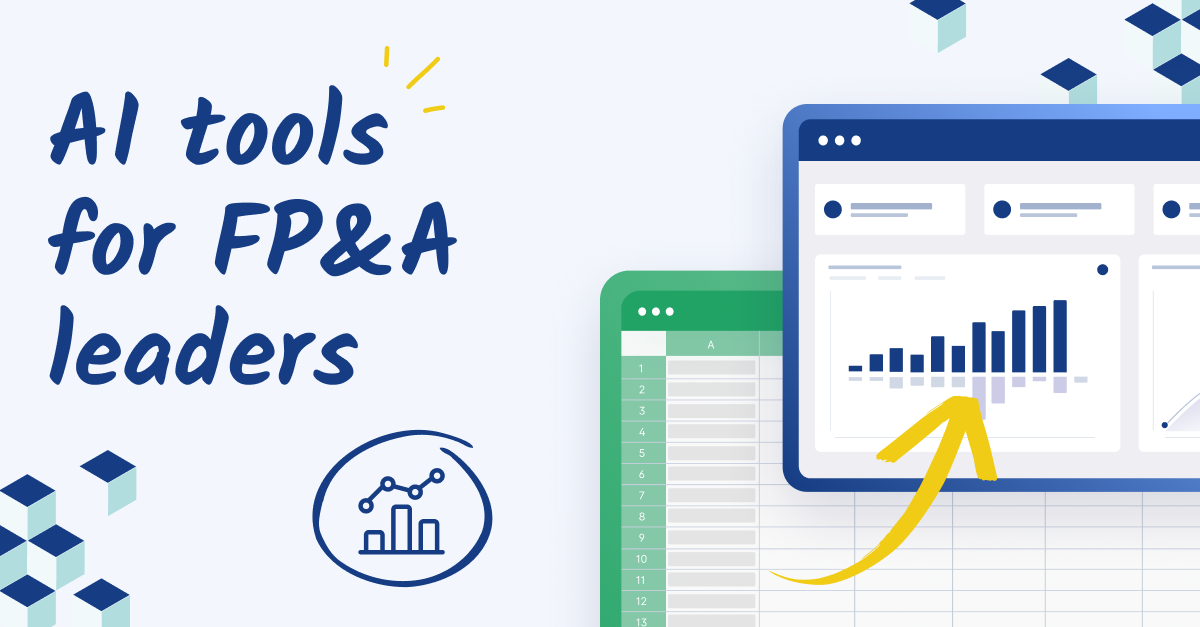What is financial planning?
Think of financial planning as a roadmap for your business. It helps you navigate challenges, prepare for opportunities, and make informed decisions based on where you are today and where you want to go.
At its core, financial planning involves forecasting your future financial performance. This means analyzing your current financial position, considering external economic factors, and modeling different scenarios to see how decisions might play out. Why does this matter? Because uncertainty is a constant in business. A strong financial plan helps you stay on course when unexpected events—like supply chain disruptions or interest rate hikes—threaten to throw you off track.
Of course, traditional financial planning requires hours of manual data entry and analysis. Now, artificial intelligence can automate these processes, allowing finance teams to test, model, and modify multiple scenarios in minutes instead of days. Then, CFOs can make strategic decisions based on real-time insights.
Where to use AI in financial planning
When compared to traditional financial planning software, AI-powered financial planning and analysis create a measurable shift in value. Here are some of the key areas that AI is transforming.
Streamlined forecasting and modeling
AI accelerates AI forecasting and modeling through automated pattern recognition in historical data and gathering real-time updates. When market conditions change, AI-powered forecasts adjust automatically—no manual recalculations needed. This leads to a more precise optimization of working capital so you can optimize your cash flow without missing growth opportunities.
And what once took weeks of analysis now happens in minutes, letting you adjust strategies on the fly. Finance teams can quickly produce rolling forecasts, streamline variance analysis, and model multiple business scenarios that adapt to new data, keeping projections current and relevant throughout the budgeting cycle.
Variance analysis
AI-powered finance tools automatically compare actuals against forecasts and identify the root causes of discrepancies. Whether a revenue shortfall stems from pricing changes, market shifts, or unexpected expenses, AI-driven analysis helps finance teams address variances before they impact bottom-line results.
Automated data management
Clean data drives accurate decisions. AI helps maintain data integrity by identifying duplicates, inconsistencies, and errors in real time. It validates inputs and standardizes data across sources, reducing manual cleanup while improving report accuracy.
With AI-powered validation, finance teams can trust that forecasts, budgets, and financial reports are built on accurate, up-to-date information, leading to more confident decision-making.
Data consolidation
Finance teams work with multiple data sources, from enterprise resource planning (ERP) systems to spreadsheets. AI tools can consolidate information automatically, detect inconsistencies, and standardize data formats. The result is unified financial data without manual merging, version control issues, or reporting delays.
Fraud detection
AI strengthens fraud prevention through continuous pattern analysis of financial transactions. Machine learning spots unusual activities, from duplicate payments to unauthorized charges. The system learns from each new transaction, becoming more precise at identifying potential fraud risks.
Compliance monitoring
AI streamlines compliance by continuously monitoring transactions, documentation, and reporting requirements. Natural language processing reviews contracts and regulatory documents to confirm compliance and flag inconsistencies, missing clauses, potential legal risks, and deviations from industry or company standards. Thanks to less manual auditing, finance teams can save a lot of time and reduce compliance risks.
Predictive analytics
Predictive analytics leverages AI to anticipate future financial outcomes based on historical data and external trends. CFOs can evaluate how specific variables—from market conditions to operational costs—will affect performance. This proactive approach enables finance teams to identify risks and opportunities before they materialize, refine budgeting strategies, and make data-backed decisions with greater confidence.
Generative AI use cases
Generative AI can enhance financial planning through automated reporting and scenario modeling. Instead of manually compiling reports, finance teams can use AI to generate customized summaries, adapting language and detail levels for executives, investors, or department heads.
The technology also enables rapid scenario testing, letting teams model multiple business cases with different variables in minutes. These scenarios can generate unexpected patterns or risk factors so finance professionals can make faster, more informed strategic decisions.

Benefits of implementing AI in your financial planning process
AI can transform financial planning from a reactive process into a proactive strategy. Here’s a rundown of the leading benefits.
Increased accuracy and faster decision-making
AI eliminates human error while processing vast datasets in seconds. Finance teams can now respond to market changes immediately, keeping financial plans nimble and relevant. For example, AI-powered predictive analytics can flag potential cash flow shortages before they happen, allowing businesses to adjust spending or secure additional funding.
Reduced manual effort and operational costs
With less manual data entry, reconciliation, and analysis, finance professionals can focus on strategic finance initiatives instead of repetitive spreadsheet work. For example, AI-driven automation can pull and clean financial data from multiple sources, eliminating the need for time-consuming data wrangling.
Fewer manual processes translates to saved time, less human error, lower operational costs, and higher team productivity.
Improved risk management
When it comes to financial planning, risk refers to the potential for unexpected events to negatively impact the financial health and stability of your business. It’s the uncertainty that looms over financial outcomes and objectives, potentially leading to unwanted results.
AI tools support risk management by monitoring financial data streams continuously and detecting risk signals as they emerge, whether that’s cash flow changes, market fluctuations, or spending anomalies. This helps finance teams address potential issues early, before they impact business performance.
Smarter resource allocation
AI analyzes spending patterns and profitability metrics to guide resource and capital allocation. Finance teams can identify inefficiencies and prioritize high-impact investments based on performance data. For example, you could use the AI platform to analyze historical project ROI and recommend where to allocate future budgets for the highest return, ensuring capital is directed toward the most profitable initiatives.
Competitive advantage in strategic planning
Companies leveraging AI for financial planning move faster and adapt more readily to change, turning the finance function from a cost center into a strategic driver of business growth. With AI, you can instantly absorb industry reports and competitor analysis to understand external factors that could impact your planning. Integrating these insights into your financial forecasts allows you to adjust your strategies before your competitors to get an edge on the market.
How strategic is your financial team? Take this free strategic finance assessment for valuable insights into the alignment of your finance team with your overarching business goals.
How to implement AI in financial planning
Implementing AI in your finance processes requires a methodical approach. Success depends on clean data, the right AI software, and proper integration into existing processes. Here's how finance teams can move from traditional planning to AI-driven insights.
1. Prepare data for AI
AI needs clean, structured data to generate accurate insights. Poor data quality leads to unreliable forecasts and flawed decisions.
Gather your data
Start by consolidating financial data from every source—ERP systems, spreadsheets, customer relationship management (CRM) platforms, and external databases. Create a single source of truth where AI can access historical statements, revenue trends, operational costs, and market indicators. Ideally, you’re looking for a financial consolidation plan where all departments can access and update the same synchronized data.
Clean and validate your data
Financial data requires regular maintenance to stay AI-ready. Clean and validate your data by:
- Removing duplicates and outdated records immediately
- Training finance teams to spot and fix inconsistencies
- Standardizing data entry formats across systems
- Automating real-time error detection
- Integrating AI-powered reconciliation tools
- Setting up routine data quality audits
- Implementing access controls and permissions
Establish data governance policies
For AI to generate reliable financial insights, businesses have to establish strong data governance policies. These frameworks help safeguard sensitive information and ensure data consistency and accuracy, making it more accessible for AI analysis.
Here’s how to build a strong data governance strategy:
- Define specific access levels for financial data: Limit access based on roles to protect sensitive information while ensuring the right stakeholders can retrieve necessary insights.
- Schedule regular compliance audits: Review data policies and security measures to ensure adherence to financial regulations.
- Update policies to match new regulations: Stay ahead of evolving compliance requirements to avoid legal and financial risks.
- Document all data-handling procedures: Maintain clear records of how data is collected, stored, and used to support transparency and accountability.
2. Choose your financial planning software
The right AI-powered financial planning and analysis software will enhance your decision-making, automate repetitive tasks, and provide real-time insights—without disrupting existing workflows. Focus on tools that solve specific problems and integrate seamlessly with your tech stack. Here’s how to start:
Assess business needs and goals
Each finance team has unique requirements. Some need advanced forecasting capabilities. Others prioritize automated variance analysis or compliance monitoring. Selecting AI tools without clear alignment to business objectives wastes resources. First, map your specific financial planning challenges to AI capabilities. Then, match the requirements against available AI planning solutions. Does it offer the automation, reporting, and predictive analytics your team needs to improve efficiency and accuracy?
Look for features like:
- Automated data consolidation: Gathers and cleans data from multiple sources, reducing manual effort.
- AI-powered forecasting: Uses machine learning to generate accurate, dynamic financial models.
- Variance analysis and anomaly detection: Identifies discrepancies between actuals and forecasts in real time.
- Scenario modeling: Allows teams to simulate different financial outcomes based on changing variables.
Choose your AI financial planning software
When selecting the right AI financial planning software, cross-reference the tools on offer with your business needs and goals, which we looked at earlier. Make sure to assess scalability. Can the software grow with your company? Consider integration requirements with existing systems, spreadsheets, financial institutions, and security protocols. Look for customization options that align with your reporting and forecasting requirements.
Budget is also a critical factor. Compare pricing models, including subscription fees and additional costs for data processing or premium features. Don’t forget about implementation time and ease of adoption. Some AI financial planning tools require extensive setup and training, while others integrate seamlessly into existing workflows. Choose a solution that balances powerful capabilities with a user-friendly experience to minimize disruption.
Finally, evaluate security and compliance to ensure the software meets industry standards for data protection, access control, and regulatory compliance. Look for SOC 2, GDPR, or other relevant certifications to safeguard sensitive financial data. Prioritize tools that automate regulatory monitoring to reduce compliance risks.
Here are some of the top AI financial planning software products on the market today.
Cube

Cube is built for spreadsheet-centric teams who want AI automation without sacrificing Excel workflows. It uses AI to streamline data consolidation, automate variance analysis, and generate real-time financial forecasts, eliminating the need for manual updates. Automated scenario planning enables real-time adjustments to forecasts.
Cube layers AI directly with Excel and Google Sheets, allowing users to leverage AI-enhanced insights without overhauling their systems entirely. It scales up and down with your business, with customizable features so you only pay for what you need.
Cube AI also assists in automating repetitive reporting tasks, ensuring that financial statements and dashboards stay up to date with minimal intervention. By using natural language queries, finance professionals can instantly generate reports and insights, making data-driven decision-making faster and more intuitive.

Workday Adaptive Planning
Workday Adaptive Planning is aimed at large organizations with complex financial modeling needs. Its AI capabilities include predictive analytics, automated variance detection, and real-time data visualization to enhance forecasting accuracy.
Machine learning algorithms help finance teams identify trends, optimize budgeting, and streamline workforce planning. Workday also integrates with its own ERP systems and uses AI to continuously refine financial models based on real-time operational data.
Vena
Like Cube, Vena brings AI-driven financial analytics to an Excel-based environment. Its AI tools automate budgeting, forecasting, and variance analysis while maintaining an Excel interface.
Predictive analytics in Vena helps finance professionals run scenario modeling and compare historical trends to future projections. AI-powered workflow automation reduces manual data entry errors and accelerates financial reporting cycles.
Anaplan
Anaplan is an enterprise-level connected planning solution that leverages AI for predictive financial modeling, demand forecasting, and scenario planning.
AI-powered simulations help businesses understand how market shifts, operational changes, and external factors impact financial outcomes. Machine learning capabilities improve resource allocation, sales planning, and workforce optimization. Anaplan's AI-driven decision intelligence tools help finance leaders make proactive, data-backed strategic moves across global operations.
3. Implement the software
Moving to AI-powered planning takes more than installing software. Teams need training, integration support, and time to adapt to a new mindset. Here’s how to implement AI-powered financial planning software successfully:
- Run a focused pilot program first. Start by applying AI to a specific financial process, such as forecasting or expense tracking, to help teams get comfortable before full implementation.
- Train teams on AI features and insight interpretation. Conduct hands-on training sessions to teach finance teams how to read AI-driven insights, adjust forecasts, and validate AI-generated reports while applying human judgment.
- Connect all financial systems for seamless data flow. Integrate AI software with ERP, accounting, and business intelligence tools to automate data consolidation, reduce errors, and provide a unified financial view.
- Compare AI forecasts against known results. Validate AI-generated predictions by benchmarking them against historical data to build trust in accuracy and identify areas for fine-tuning.
4. Incorporate your AI-powered software into the financial planning process
Here are some tips on how to make AI a core part of planning, streamlining, and decision-making while keeping common-sense checks on its utility.
- Define clear success metrics like reducing budget variance or speeding up financial reporting cycles.
- Customize AI models based on industry-specific factors, company size, and operational goals.
- Adjust AI parameters based on actual results by comparing forecasts with real-world outcomes and adjusting parameters for improved accuracy.
- Include AI insights in strategic planning meetings, budget discussions, and forecasting sessions to enhance data-driven decision-making.
- Involve key stakeholders like finance leaders, analysts, and IT teams to ensure AI solutions align with real-world needs and workflows.
Mistakes to avoid when using AI for financial planning
AI transforms financial planning—but success depends on proper implementation. Here's what finance leaders need to watch for when adding AI to their planning processes.
Assuming AI is a plug-and-play solution
AI financial planning tools are powerful, but they require structured processes to deliver real value. Scattered spreadsheets, inconsistent reporting methods, and unclear workflows create barriers to effective AI implementation.
Before rolling out AI, finance teams should establish standardized data formats, reporting hierarchies, and validation steps to ensure smooth integration. For example, defining how revenue categories are labeled across departments prevents AI from misinterpreting financial data. AI amplifies existing processes—good or bad—so strong foundations lead to meaningful insights, while weak ones lead to unreliable predictions.
Misaligning AI initiatives and business needs
As with all revolutionary technologies, people are quick to implement it, but don’t always have a clear strategy. This is understandable—we’re still at the beginning of this revolution. However, jumping into AI adoption without a well-defined plan can lead to wasted resources, inefficient processes, and missed opportunities.
Let’s say a mid-sized SaaS company invests in an advanced AI-powered planning tool designed for large enterprises with complex, multi-entity operations. The finance team expected AI to streamline planning and forecasting, but the tool required significant IT support, complex data integrations, and extensive training—resources the company didn’t have.
So, instead of improving efficiency, the AI software added friction to their existing workflows. The finance team struggled to integrate it with their spreadsheet-based models, leading to inaccurate forecasts and frustration.
Not implementing stringent data quality checks
Even the most advanced AI is only as reliable as the data it processes. An Informatica study found that 56% of Chief Data Officers (CDOs) describe data reliability as a key barrier to advancing GenAI pilots. This results in masses of wasted potential due to inconsistent entries, duplicates, and outdated information that create misleading forecasts and flawed recommendations.
Start by implementing automated data validation checks that flag inconsistencies, missing values, or duplicate entries in real-time, before they distort financial reports. Schedule regular audits to catch issues before they impact key decisions. AI-powered audit tools can streamline this process by continuously monitoring financial records for discrepancies, such as unexpected shifts in cash flow or mismatched balance sheet entries. When data quality improves, AI delivers more accurate and actionable insights.
Lack of user adoption and training
For finance teams to fully leverage AI, they must trust its insights and feel confident in acting on them. Without proper training and confidence-building, teams default to manual processes, negating AI's benefits.
To earn trust in your team and that all-important buy-in from key decision makers, invest in comprehensive training that goes beyond basic software tutorials. Instead, offer hands-on experience interpreting AI-driven forecasts and comparing them with historical data to see firsthand how AI improves accuracy and efficiency.
Equally important is reinforcing that AI is a tool to enhance human expertise, not replace it. There is naturally a lot of suspicion of tools coming in to take over jobs, so reassure your team that AI is there to reduce repetitive tasks, uncover hidden patterns, and support data-driven decision-making.
As confidence in AI grows, so does adoption, leading to more proactive financial planning and strategic teams.
Over-reliance on AI without human judgment
AI excels at pattern recognition but can lack the business context that human judgment provides, so no, AI won’t replace your finance team. While the tech can process vast datasets and generate forecasts, you need finance leaders to interpret results through strategic and operational lenses. Take mergers and acquisitions, for example. AI can’t take on the negotiation skills, cultural understanding, and ability to foresee potential synergies or conflicts between entities.
Let AI handle data processing and initial analysis. Then apply human judgment to consider market conditions, competitive dynamics, and organizational changes. The combination of AI-powered insights and experienced financial leadership drives true strategic decision-making.
Leverage AI to improve your organization's financial planning
Transforming financial planning with AI starts with clear priorities and measurable goals. Finance teams need solutions that enhance—not replace—their existing processes while delivering actionable insights.
Cube delivers AI-powered planning capabilities while preserving the flexibility and familiarity of spreadsheets. If you want to see how to apply AI to your organization’s financial planning, schedule a demo with Cube.



.png)










![14 best AI budgeting tools and software [2024 review]](https://www.cubesoftware.com/hubfs/Blog%20image%20%2868%29.png)